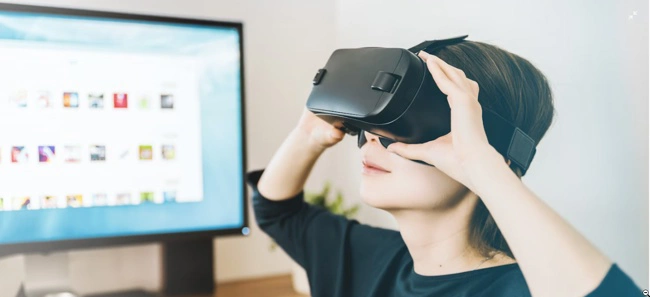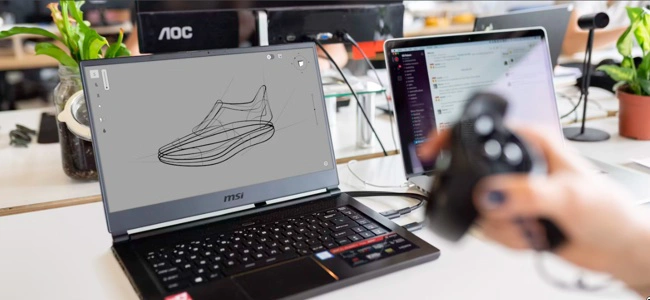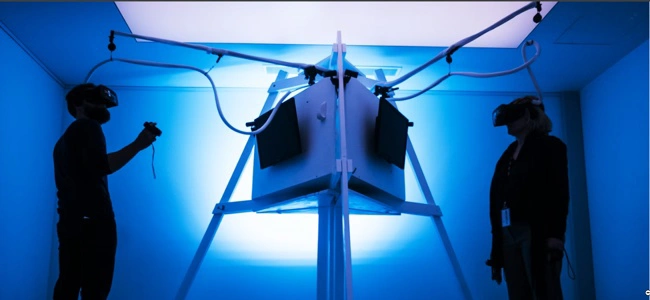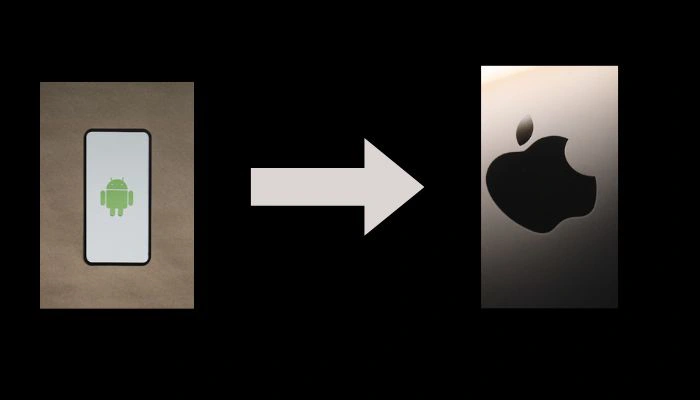What is the Future of Virtual Reality Technology?
Nowadays, a new frontier is emerging, promising to reshape how we work, learn, and play. Virtual reality (VR), once relegated to the realm of science fiction and niche gaming, is now a powerful force poised to revolutionize our daily lives. From immersive training simulations for surgeons to virtual showrooms for real estate, the applications are expanding at a breathtaking pace. This technology is no longer a mere novelty; it’s a tangible tool that is redefining human-computer interaction and creating possibilities we could only dream of a decade ago. As hardware becomes more powerful and software ecosystems mature, the true potential of VR is beginning to unfold.
The future of virtual reality technology is a dynamic landscape, characterized by advancements that will make experiences more immersive, accessible, and integrated. We are moving beyond simple entertainment and into a phase where VR will become a staple across diverse industries. The next wave of innovation will see headsets become lighter and more comfortable, haptic feedback becoming more nuanced, and the integration of artificial intelligence creating truly intelligent and responsive virtual worlds. This evolution will not only enhance existing applications but also unlock entirely new use cases, fundamentally changing how we approach problem-solving and collaboration. The convergence of VR with other emerging technologies, such as 5G and AI, will fuel this transformation, paving the way for a hyper-realistic, multi-sensory future.
So, what does this future truly hold? How will this technology impact our lives, and what are the key trends that will drive its development? This comprehensive blog post will delve into the major trends and innovations shaping the future of virtual reality technology. We will explore its transformative impact on various industries, the challenges that need to be overcome, and the exciting possibilities that lie ahead. Join us as we journey into the next dimension of human experience and explore the groundbreaking world of VR.
Major Trends Shaping the Future of Virtual Reality Technology

The evolution of virtual reality technology is not happening in a vacuum. It is being driven by a confluence of technological advancements and changing user expectations. These trends are collectively pushing the boundaries of what is possible, making VR more powerful, practical, and pervasive. Understanding these key trends is essential for grasping the trajectory of this transformative technology.
1. Hardware Advancements and Enhanced Accessibility
The days of bulky, cumbersome VR headsets tethered to powerful, expensive PCs are quickly fading. The industry is rapidly moving towards standalone devices that are more affordable, comfortable, and accessible to a wider audience. This shift is a game-changer, removing significant barriers to entry for both consumers and businesses.
- Lighter, More Ergonomic Headsets: Companies are focusing on creating headsets that are a fraction of the size and weight of their predecessors. This addresses the issue of "VR fatigue," enabling users to engage in longer, more comfortable sessions.
- Improved Displays and Processing Power: The resolution and refresh rates of VR displays are constantly improving, leading to a more realistic and visually stunning experience. Concurrently, standalone headsets are packing more powerful processing chips, allowing for high-fidelity graphics without the need for an external computer.
- Advanced Haptic Feedback: Haptic gloves, suits, and accessories are moving beyond simple vibrations to provide a more nuanced sense of touch. This enables users to "feel" virtual objects, whether it’s the weight of a virtual tool or the texture of a digital surface, significantly boosting immersion.
2. The Rise of Social and Collaborative VR Experiences
For a long time, VR was a largely solitary experience. However, a major trend is the development of social and collaborative platforms that allow people to interact in shared virtual spaces. This is transforming VR from an isolated activity into a powerful tool for connection and teamwork.
- Virtual Meeting Spaces and Offices: Businesses are using VR to create "dematerialized offices" where remote teams can meet, brainstorm, and collaborate in an immersive 3D environment. This is proving to be a more engaging and effective alternative to traditional video conferencing.
- Immersive Social Platforms: Platforms like VRChat and Rec Room are creating virtual worlds where people can socialize, attend events, and play games together. The future will see these platforms become more integrated with our social lives, offering richer and more meaningful interactions than what is possible on 2D social media.
- Events and Entertainment: From virtual concerts and live sporting events to interactive art exhibitions, VR is creating new ways for people to experience entertainment together, regardless of their physical location.
3. The Integration of Artificial Intelligence (AI)
AI is the next major catalyst for the evolution of virtual reality technology. The fusion of these two fields is creating adaptive, intelligent, and personalized VR experiences that were previously impossible.
- Intelligent Virtual Assistants: AI-powered virtual assistants are becoming more common, able to help users navigate virtual environments, answer questions, and perform tasks. This makes VR more intuitive and user-friendly.
- Procedural Content Generation: AI can now be used to automatically generate vast, realistic virtual worlds, reducing the time and cost associated with manual content creation. This allows for more dynamic and varied experiences, especially in gaming and training simulations.
- Personalized and Adaptive Experiences: AI analyzes user behavior and preferences in real time to adapt the virtual environment, offering a truly personalized experience. For example, an educational VR program could adjust its difficulty or content based on a student’s progress and learning style.
How Virtual Reality is Transforming Industries

The transformative power of virtual reality technology extends far beyond entertainment. Industries across the board are adopting VR to improve efficiency, enhance training, and create innovative new products and services. Here is a look at some of the most significant applications.
Healthcare
VR is a groundbreaking tool in healthcare, offering safe and effective solutions for a range of challenges.
- Surgical Training and Simulation: Medical students can perform complex surgical procedures in a risk-free virtual environment, practicing and perfecting their skills before operating on a real patient.
- Pain Management and Rehabilitation: VR is used as a non-pharmacological treatment for chronic pain by immersing patients in calming or distracting environments. It is also used in physical therapy to motivate patients and make rehabilitation exercises more engaging.
- Mental Health Therapy: VR provides a controlled environment for exposure therapy, helping patients with phobias, anxiety, and PTSD confront their fears in a safe, guided setting.
Education and Training
VR is redefining how we learn by making education more immersive, interactive, and accessible.
- Virtual Field Trips: Students can take virtual field trips to historical sites, distant planets, or the inside of a human cell, making abstract concepts tangible and engaging.
- Corporate Training: Companies use VR to train employees in hazardous or complex situations, such as operating heavy machinery or responding to emergencies, without putting anyone at risk. This leads to higher knowledge retention and better performance.
Manufacturing and Engineering
VR is streamlining the design and manufacturing processes, reducing costs and accelerating innovation.
- Product Prototyping: Engineers can create and test virtual prototypes of products, allowing them to identify design flaws and make improvements before investing in physical materials.
- Maintenance and Repair: Field technicians can use AR/VR headsets to receive real-time instructions and visual overlays while performing complex maintenance tasks, improving accuracy and speed.
A Glimpse into the Future: The Convergence of VR and the Metaverse
The term "metaverse" has been a significant part of the conversation surrounding VR. While the metaverse is still in its nascent stages, it represents the ultimate culmination of virtual reality technology—a persistent, shared, virtual world that is a seamless extension of our physical one.
Here’s a table outlining the key differences between VR as we know it today and the future vision of the metaverse:
| Aspect | Current Virtual Reality Technology | Future Metaverse |
| Environment | Often self-contained experiences or platforms | Persistent, interconnected virtual worlds |
| Interactivity | Primarily focused on one user or small groups | Massively multiplayer, real-time social interaction |
| Economy | In-app purchases, game-specific currencies | A fully-functioning, decentralized economy with digital assets |
| Integration | Limited integration with real-world activities | Seamless integration with work, social life, and commerce |
| Accessibility | Requires dedicated headsets and specific apps | Accessible across multiple devices, including non-VR screens |
The metaverse is the ultimate expression of the future of virtual reality technology. It’s a world where digital identities, social connections, and economic opportunities will thrive in a way that is profoundly connected to, and yet separate from, our physical reality.
The Road Ahead: Challenges and Opportunities
While the future of virtual reality technology is bright, there are still challenges to overcome. These include the high cost of development, health and safety concerns (such as cybersickness), and the need for standardized platforms. However, these challenges also present significant opportunities for innovation. As the technology matures, we can expect to see solutions that make VR more affordable, comfortable, and intuitive for everyone.

The long-term impact of VR will depend on our ability to navigate these hurdles. The ongoing miniaturization of hardware, the development of more sophisticated tracking systems, and the creation of more user-friendly content will be critical. Ultimately, the future of virtual reality technology is not just about the gadgets we wear; it's about the new realities we choose to create and explore.
Conclusion
Virtual reality technology is on an exponential growth curve, moving from a niche market to a transformative force across all aspects of life. The trends of hardware miniaturization, the rise of social VR, and the integration of AI are converging to create a future where immersive experiences are not only commonplace but also fundamentally integrated into our daily routines. From revolutionizing how we train professionals and design products to offering new ways to connect with friends and family, the potential is vast. The journey into this new dimension is just beginning, and the most exciting innovations are still to come. The future of virtual reality technology is a collaborative, interconnected, and hyper-realistic world, waiting for us to step inside.
Ready to explore how virtual reality can transform your business? Contact us today for a consultation on our custom VR solutions.









